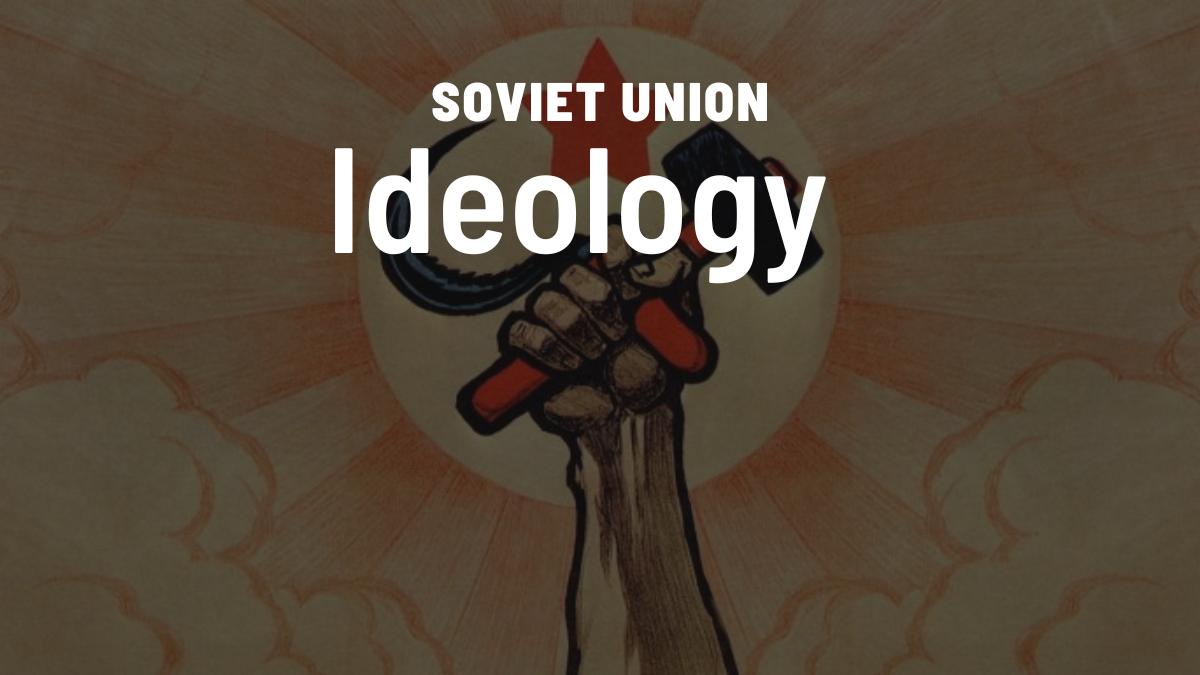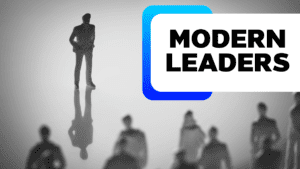Ever wondered what daily life was like behind the Iron Curtain? What factors led to the rise of the Soviet Union as a superpower, and what were the causes behind its abrupt decline? Are you ready to step back in time and explore the Soviet Union’s ideology?
Embark on a journey to revisit the essence of the Soviet Union. Spanning from 1922 to 1991, it stood as a formidable superpower known as the Union of Soviet Socialist Republics (USSR). This wasn’t your regular country. It was like a political and economic giant, born after the Russian Revolution.
Here’s the kicker – the Soviet Union wasn’t your typical one-country deal. Nope, it was more like a squad of countries all hanging out together under one big Soviet umbrella. Imagine a bunch of nations teaming up. Each with its quirks and cultures, all part of this massive Soviet family. It covered a huge chunk of land, bossing around Eastern Europe and Central Asia.
The Soviets had this cool, or maybe not so cool, mix of communism and socialism going. They had their vibe, with the hammer and sickle symbol, and they left a massive mark on world history. Let’s uncover the secrets of Soviet Union ideology. Checking out its political scene, everyday life, and what finally made it all crumble.
What was the soviet union political ideology?
Let’s dissect the political side of the Soviet Union’s grand narrative. Their political ideology was like a script dictating how the nation should run. The star of this show was none other than communism.
Government: director of the show
In this political playbook, the government wasn’t just a bunch of decision-makers. It was more like the director, orchestrating the entire production. Picture a stage where everyone has a role, and the government ensures everyone gets their cue. It wasn’t about a single person calling the shots. It was about the collective, with the Communist Party taking center stage.
Communist party: pillar of the ideology
The Communist Party was the monolith of the soviet union political ideology. They were the architects of the communist dream, inspired by Karl Marx’s ideology. Karl Marx’s communism envisioned a classless society. The means of production in such a society are collectively owned. The aim is to establish a more equitable and just social order.
Marxism and Leninism fusion
Soviet Union’s ideology was unique because they incorporated Lenin’s idea of communism into Marxism. The mix of both was all about establishing a dictatorship of the proletariat. It was to be led by a revolutionary vanguard party. It would set the political prelude to the onset of communism.
Integration of ideology into society
Soviet union political ideology wasn’t merely a concept; it integrated seamlessly into Soviet society. The government aimed to establish a social structure where wealth was not centralized in the hands of a select few. They said that power shouldn’t be held by a select elite. This is exactly why the communist party had a hold.
Their job was to make sure the show ran smoothly. They implemented policies aligning with the ideology of equality and collective ownership. It was a vision of governance focused on the common good. The Soviet Union’s political ideology wasn’t just about politics. It was a script for a society striving for a communal and egalitarian future.
The political system of soviet union: unraveling the layers
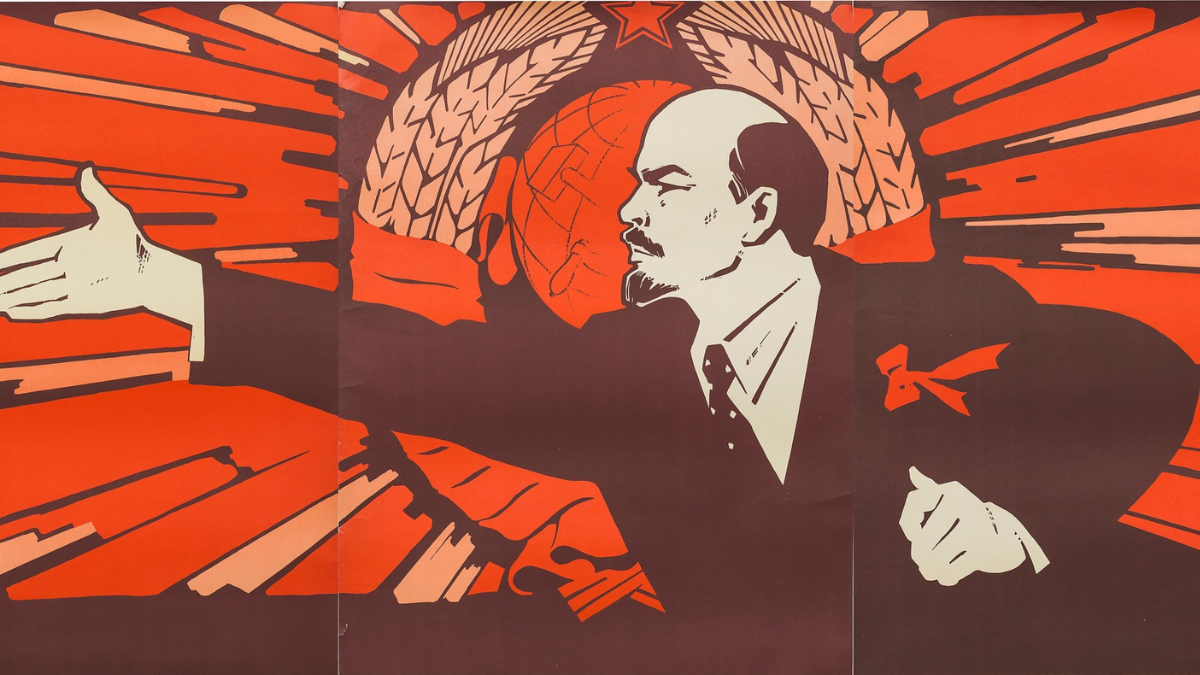
The political system of Soviet Union operated as a single-party system. It was predominantly controlled by the Communist Party. This party was not only a political organization but also shaped the political dynamics. They used to pull the strings of governance. The Communist Party wasn’t about elections or vying for votes. It was the nucleus of the Soviet society. They dictated the policies and shaped the very structure of the nation.
Within this system, the government wasn’t a multiparty democracy. Instead, the Communist Party took the lead to ensure its ideology permeated every aspect of decision-making. It wasn’t a case of different parties offering diverse perspectives. It was a cohesive effort directed toward the singular goal of achieving communism.
The political hierarchy was marked by a tiered structure, with the Supreme Soviet at the helm. This was the highest legislative body, responsible for crafting laws and policies. The General Secretary was considered the leader. They, in conjunction with a body known as the Politburo, served as the primary policymaking committee in the Soviet Union. They were responsible for crucial decisions shaping the entire nation.
The political system of Soviet Union comprised various republics, each possessing its own local governance. But here’s the twist: while these republics had their say, the real power hub was in Moscow. It’s like having a bunch of local managers, but the big boss is in the head office making the major calls.
The soviet union constitution
The rulebook that shaped the Soviet Union was the Soviet Union Constitution. This document, born in 1936 was more than just a set of rules. It was the game plan for running the entire Soviet republics.
Envision it as the nation’s instruction manual, laying out the core principles that shaped Soviet life. At its heart was a commitment to socialism, emphasizing the idea of sharing resources among the people.
The standout feature? A one-party system, with the Communist Party taking center stage. This wasn’t just a political club; it was the powerhouse making decisions that echoed through every aspect of Soviet society.
The judiciary played a crucial role in interpreting and applying the law. Courts were tasked with upholding the Constitution and ensuring justice. The system operated within the broader framework of the Communist Party’s influence.
From investigation to trial, the legal process reflected the socialist ideals of the state. Punishments were not just punitive. They were seen as tools for societal transformation and adherence to the socialist vision.
Understanding the legal framework involves examining the rights afforded to Soviet citizens. While the Constitution guaranteed certain rights, the reality was nuanced. Balancing individual liberties with the overarching control of the state created a unique dynamic. The concept of rights existed within the context of socialist principles.
The Soviet Union Constitution wasn’t a mere formality. It was the backbone of the nation. It spelled out who held the reins and how decisions were made. There were fundamental principles that everyone was expected to uphold.
Looking back, Soviet Union Constitution wasn’t just a collection of legal terms. It defined the very essence of the Soviet Union. It was the script the nation followed. Understanding it is like deciphering the genetic code of Soviet politics. This document wasn’t just about laws. It was about the soul of a nation, shaping its identity and directing its course.
Life behind the iron curtain
Picture a world where daily life was intricately woven into the fabric of Soviet Union ideology. Workplaces were not just spaces for employment but also arenas for propagating socialist values. Families navigated the challenges of daily routines, with an undercurrent of loyalty to the state. In the political system of Soviet Union, every aspect of life was touched by the overarching influence of the state.
Education and propaganda in soviet union
Education wasn’t just about learning facts. It was a tool for shaping a collective mindset. Soviet citizens were exposed to a curriculum infused with socialist ideology. It fostered a sense of patriotism and commitment to the state. Propaganda, omnipresent in various forms, served to reinforce political narratives.
Consumption and scarcity in soviet union
Behind the Iron Curtain, access to goods wasn’t determined by market forces but by the state-controlled economy. Citizens faced both scarcity and abundance. Certain products became the symbols of status and privilege. Queues were a common sight as people waited for basic necessities.
Community and leisure in soviet union
The community played a significant role in Soviet life. The concept of collective living was embedded in the social fabric. It was either through communal housing or shared public spaces. Leisure activities were often state-sponsored, reflecting the ideology of the time.
Surveillance and control in soviet union
Residing behind the Iron Curtain entailed being constantly monitored by the state. Surveillance was widespread, and any manifestations of disagreement were met with serious repercussions. The state’s control extended not only to public spaces but also to the private lives of its citizens.
Soviet union ideology and the cold war
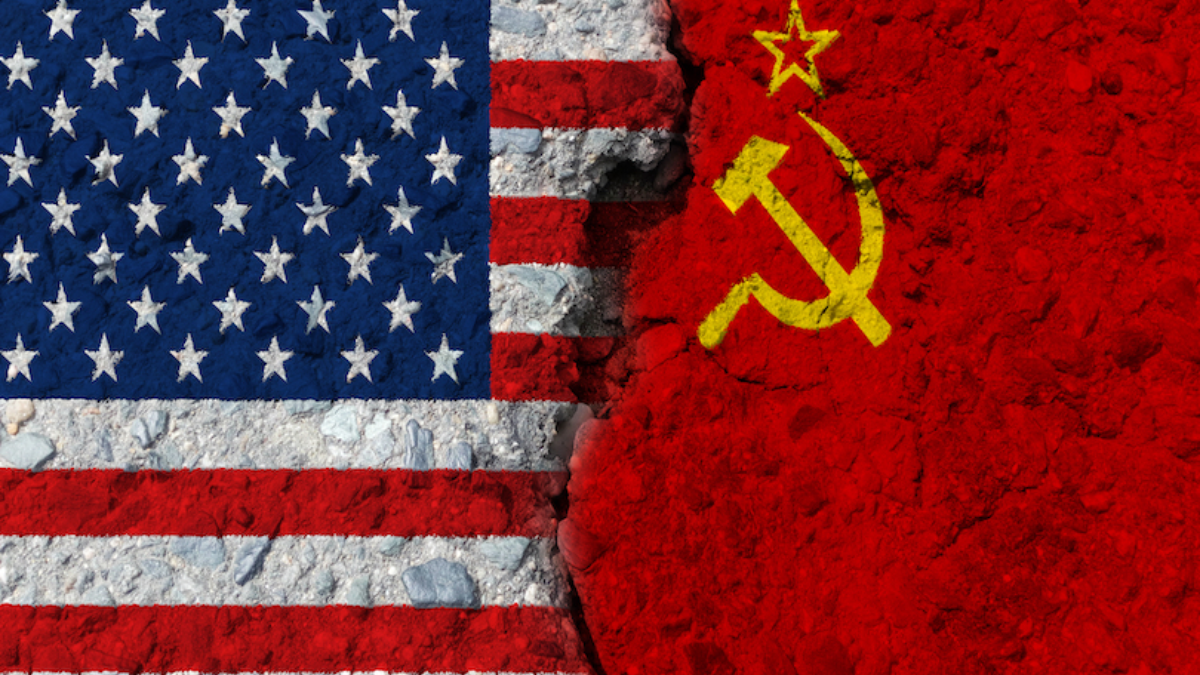
The Soviet Union’s political ideology clashed with those of the Western world during the Cold War. At the core of the Soviet Union’s ideology was communism. It was driven by the vision of a society without social classes. The collective ownership of the means of production prevailed. The Communist Party aspired to disseminate this ideology globally. It was led by figures such as Lenin and subsequently Stalin.
Soviet union ideology wasn’t confined to its borders. The formation of the Warsaw Pact in 1955 solidified the alliance of socialist states under Soviet influence. The Soviet Union ideology of communism sought to extend its reach. They encouraged and supported pro-Soviet movements and governments around the globe.
The Cold War was an ideological struggle along with a military and political one. Soviet propaganda, alongside its Western counterpart, worked tirelessly to shape public opinion. The clash of narratives between communism and capitalism intensified. Both sides were aiming to showcase their system as superior.
The ideological competition between the U.S. and the USSR encompassed different arenas. Even the arms race and the space race. Each side sought to demonstrate the superiority of its system. It was usually through technological and scientific achievements. It resulted in historic events like the launching of Sputnik and the successful landing on the moon.
The Cold War witnessed numerous proxy conflicts. The superpowers endorsed conflicting factions in global disputes. These conflicts became battlegrounds for the larger struggle between communism and capitalism. However, they were often largely fueled by ideological differences.
Spies and secrets in soviet union
Spies played a pivotal role in the struggle between the superpowers. The Cold War was marked by an intricate dance of intelligence agencies. The CIA represented the United States while the KGB stood as the formidable Soviet counterpart. Espionage became a chess game, with each side attempting to outmaneuver the other. They tried to acquire crucial information, from military plans to technological advancements.
The allure of double agents added a layer of complexity to the spy game. Figures like Aldrich Ames and Kim Philby betrayed their own countries. They provided valuable information to the enemy. The realm of espionage transformed into a complex network of trust and deception. Each hidden piece of information held the potential to be both advantageous and perilous.
Both the United States and the Soviet Union extensively engaged in espionage strategies. This encompassed activities like stealing blueprints and infiltrating research facilities. It also included participating in cyber warfare, utilizing all possible methods to secure a strategic edge.
A significant occurrence in Cold War chronicles was the Cuban Missile Crisis. There, intelligence played a vital role. The identification of Soviet missiles in Cuba by American spy planes heightened tensions to the verge of nuclear conflict. The crisis underscored the importance of accurate and timely intelligence in averting catastrophe.
The annals of Cold War espionage are filled with legendary and notorious figures. From the mysterious Rudolf Abel to the notorious Julius and Ethel Rosenberg. These covert operatives made a lasting impact on the period. Their narratives stand as evidence of the high-stakes in activities that played out behind the scenes.
Popularity of the soviet union
The Soviet Union, during its existence, held global influence. It was recognized for several notable achievements that left a lasting impact on the world stage.
Space:
The Soviet Union earned a significant spot in historical records. They pioneered accomplishments in space exploration. In 1957, they ushered in the age of space exploration with the launch of Sputnik, the first artificial satellite in the world. Furthermore, in 1961, Soviet cosmonaut Yuri Gagarin reached a historic milestone. He became the first human to orbit the Earth. This solidified the USSR’s reputation as a pioneer in space exploration.
Literature and arts:
The Soviet Union was popular for literature and arts. It brought forth legendary figures like Leo Tolstoy, Fyodor Dostoevsky, and Anton Chekhov. With directors like Sergei Eisenstein, Soviet cinema contributed to groundbreaking films. These included “Battleship Potemkin.” The USSR’s cultural output earned global recognition. It showcased the rich artistic heritage of the nation.
Sports:
The Soviet Union was popular for its dominance in the world of sports. They consistently ranked among the top performers in the Olympic Games. From gymnastics to ice hockey, Soviet athletes showcased prowess and determination. They earned the admiration of sports enthusiasts worldwide.
Science and technology:
The Soviet Union made notable advancements in scientific and technological domains. It was exemplified by the creation of the AK-47, a widely utilized assault rifle. There were also breakthroughs in nuclear physics and mathematics. These achievements highlighted the country’s dedication to technological advancement.
Contributions to World War II
The sacrifices and contributions of the Soviet Union during World War II garnered respect and gratitude globally. The crucial victories on the Eastern Front against Nazi Germany significantly influenced the outcome of the war.
Anti-colonial stance:
The Soviet Union was popular for supporting movements against colonialism and imperialism. It stood against colonial oppression. They also backed national liberation movements in Africa, Asia, and Latin America. This resonated with many nations striving for independence.
How did soviet union collapse
The downfall of the Soviet Union was a diverse progression that transpired over the years. It concluded with the official disbandment of the Union of Soviet Socialist Republics (USSR) on December 26, 1991. Numerous pivotal elements played a role in this occurrence:
Economic challenges
The Soviet economy operated on centralized planning, where the state managed major industries. However, this approach resulted in inefficiencies. Decisions were made without taking into account market demand or efficiently allocating resources.
The emphasis on heavy industry and military production led to imbalances in the economy. They were taking place at the cost of consumer goods and agriculture. This contributed to chronic shortages of everyday items. It led to dissatisfaction among the population.
The Soviet Union fell behind in technological advancements. More particularly in information technology and consumer goods. The inability to keep up with the technological progress in the West further strained the economy.
Political reforms
The rise of Mikhail Gorbachev to power in 1985 signaled a notable transformation in Soviet union. His implementation of perestroika aimed to restructure the economy. Glasnost sought to foster openness and transparency in governance.
Glasnost facilitated greater freedom of speech and political expression. It resulted in heightened public awareness of social and political issues. However, it also brought to light the systemic problems that had previously been concealed from the public eye.
Nationalism and independence movements
The Soviet Union was a federation of diverse ethnic groups, and nationalist sentiments began to surge. The Baltic states, in particular, sought independence. It led to protests and demands for autonomy in other republics.
Ethnic tensions escalated, especially in regions with mixed populations. Conflicts erupted in places like Nagorno-Karabakh and Georgia. They reflected the complexities of managing diverse ethnic and cultural groups within the Soviet Union.
Economic decline and social unrest
The reforms introduced by Gorbachev aimed at revitalizing the economy. But in the short term, they contributed to economic decline. The dismantling of the centralized planning system exacerbated existing economic issues. They were knocked down without a clear market-oriented replacement.
As living standards declined, dissatisfaction grew. Strikes, protests, and public demonstrations became more common. This reflected the frustration of the Soviet citizens. Both with the economic hardships and lack of political responsiveness.
Military and political changes:
The rivalry between the Soviet Union ideology and the United States’ ideology began to soften as the Cold War was drawing to an end. Gorbachev sought a different path. He entered discussions with the United States for agreements to reduce arms. He signaled a departure from the previous confrontational strategies.
The START treaties represented a notable decrease in the nuclear stockpiles of both superpowers. It indicated a move away from the arms race.
August coup of 1991
In August 1991, conservative elements within the Communist Party attempted a coup to preserve the political system of soviet union. They were alarmed by the rapid changes initiated by Gorbachev. The coup failed, but it weakened Gorbachev politically. This accelerated the momentum toward dissolution
Who destroyed soviet union?
Nobody destroyed the soviet union. Its collapse was the result of a convergence among various factors. They encompassed both domestic and international political dynamics. These diverse elements together played a role in the downfall of the superpower.
Domestically, economic inefficiencies, bureaucratic corruption, and a centrally planned system proved unsustainable. It sowed the seeds of internal discord. The policies of perestroika and glasnost were also initiated by Soviet leader Mikhail Gorbachev.
It intended to revitalize the system but inadvertently led to other outcomes. There was increased political openness. It enabled dissent, and nationalist movements within various Soviet republics and led to the collapse of the empire.
The international arena also went through changes. The end of the Cold War eased geopolitical tensions and changed interstate dynamics. Most countries in Eastern Europe declared independence from the USSR.
The Berlin Wall fell which further weakened the influence of soviet union ideology. These changing international dynamics are coupled with internal economic and political challenges. They created a perfect storm that ultimately led to the dissolution of the Soviet Union in 1991.
The Soviet Union Ideology in Pop Culture
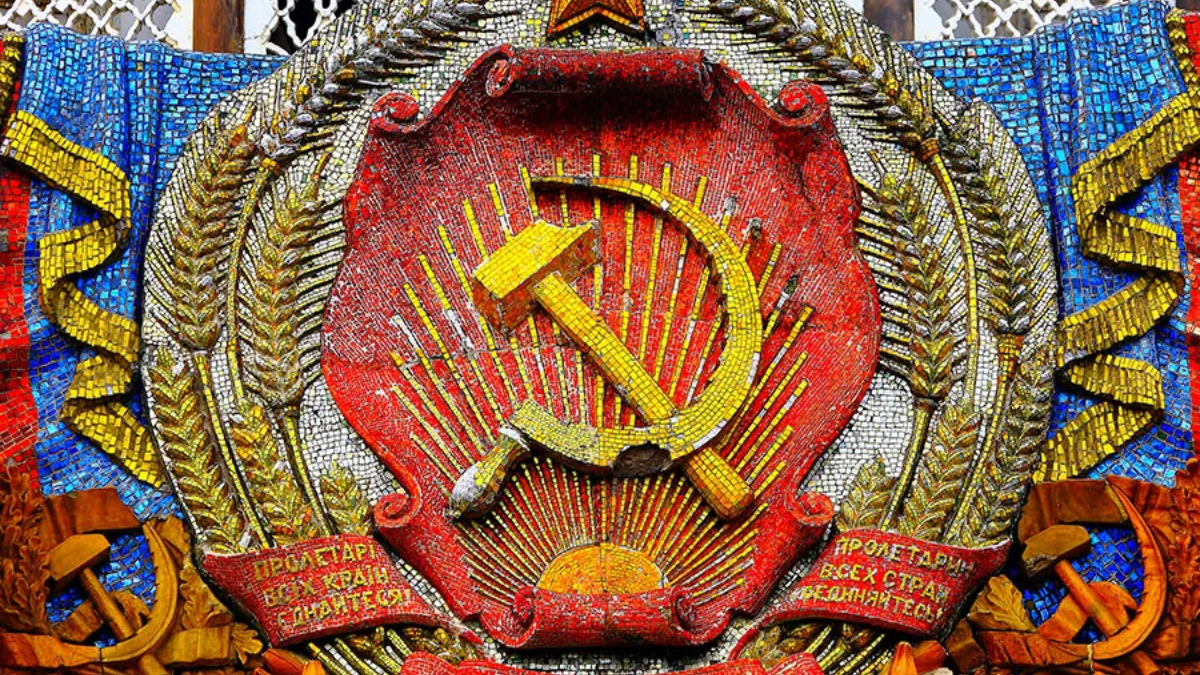
The impact of the Soviet Union ideology transcends mere geopolitical realms. It has integrated into pop culture. This is creating a lasting impression that still enthralls audiences today. It spans from the tense Cold War period to the dramatic downfall of the superpower. The Soviet story has served as an inspiration and has influenced entertainment, literature, and art.
Cinematic Depictions of the Cold War
Cinematic representations of the Soviet Union offer a kaleidoscopic lens. Through it, we glimpse the multifaceted soul of a nation caught in the embrace of history. Beyond the stark binaries of Cold War rivalries, these films become poetic explorations of the human spirit. They navigate the labyrinthine corridors of ideology and reality.
From the poetic landscapes of Andrei Tarkovsky’s “Stalker” to the whimsical dance of shadows in Sergei Eisenstein’s “Battleship Potemkin.” Soviet cinema is avant-garde that captures the paradoxes and aspirations of an evolving society.
The silver screen becomes a canvas where the drab greys of socialist realism blend with the vibrant hues of suppressed dreams. It creates a cinematic fabric that goes beyond political dogma.
In this realm, directors like Dziga Vertov and Aleksandr Sokurov became architects of dreams. They constructed visual narratives that echo the nation’s collective memory. They offer not just a historical record but a glimpse into the nature of power, revolution, and the human spirit.
Literary Explorations of Ideological Struggles
In literary realms, the Soviet Union ideology has remained a compelling muse for writers. George Orwell’s “Animal Farm” stands as an enduring allegory. It employed a farm and its animals to symbolically represent the Soviet Union’s transformation.
The novel offers a poignant critique of the corrupting effects of authority. It echoes the actual events within the political system of Soviet union. These literary creations offer readers a window into the dynamics that marked the internal struggles of the Soviet Union.
Iconography in Graphic Design and Fashion
The iconic emblems of the Soviet Union ideology have evolved into significant elements. Particularly the hammer and sickle become a part of visual arts and fashion. These distinct and prominent symbols have been reinterpreted. Repurposed, they have been featured on garments, artworks, and posters.
The recognizable imagery is associated with the Soviet Union ideology. Including the red and gold color palette, which has been detached from its initial political connotations. This visual lexicon acknowledges the historical importance of the Soviet Union. It also serves as a powerful means of artistic expression in present-day contexts.
Architectural Legacy
The Soviet cities have a distinct architecture. It is characterized by grandiose structures and utilitarian design, and has become a visual marker of the era. Brutalist buildings, monuments, and public spaces were crafted during the Soviet period. They continue to shape cityscapes and influence modern architectural discourse.
Photographers and artists often seek to capture the beauty of abandoned Soviet structures. They reflect on the passage of time and the remnants of a bygone era. The architectural legacy of the Soviet Union shows its ambitious vision. It has had an enduring influence on urban landscapes.
Musical Narratives of Dissent and Defiance
In the realm of music, the Soviet Union ideology has inspired narratives of dissent and defiance. Rock and punk music, often considered rebellious genres, found resonance among Soviet youth. It was a form of expression against the constraints of the state.
Bands like Kino and DDT emerged as influential voices in the Soviet rock scene. They used music to articulate the frustrations and aspirations of a generation. These musical narratives served as a cultural undercurrent. They challenged the state-sanctioned norms. They offered a sonic rebellion against the prevailing political climate.
Conclusion
The story of the Soviet Union ideology is like a big, complicated book in history. It started with a strong belief in communism and went through intense times. Especially during the Cold War with spying and secrets. The Soviet Union’s powerful journey wasn’t brought down by outside enemies. It faced challenges from within, like economic problems and the unintended results of reforms. Exploring the secrets of the Soviet Union shows us a mix of political ideas, everyday life, and a powerful rise and fall. Even though the Soviet Union isn’t around anymore, its impact on the world is still felt. It reminds us of a time full of big achievements and tough moments.

